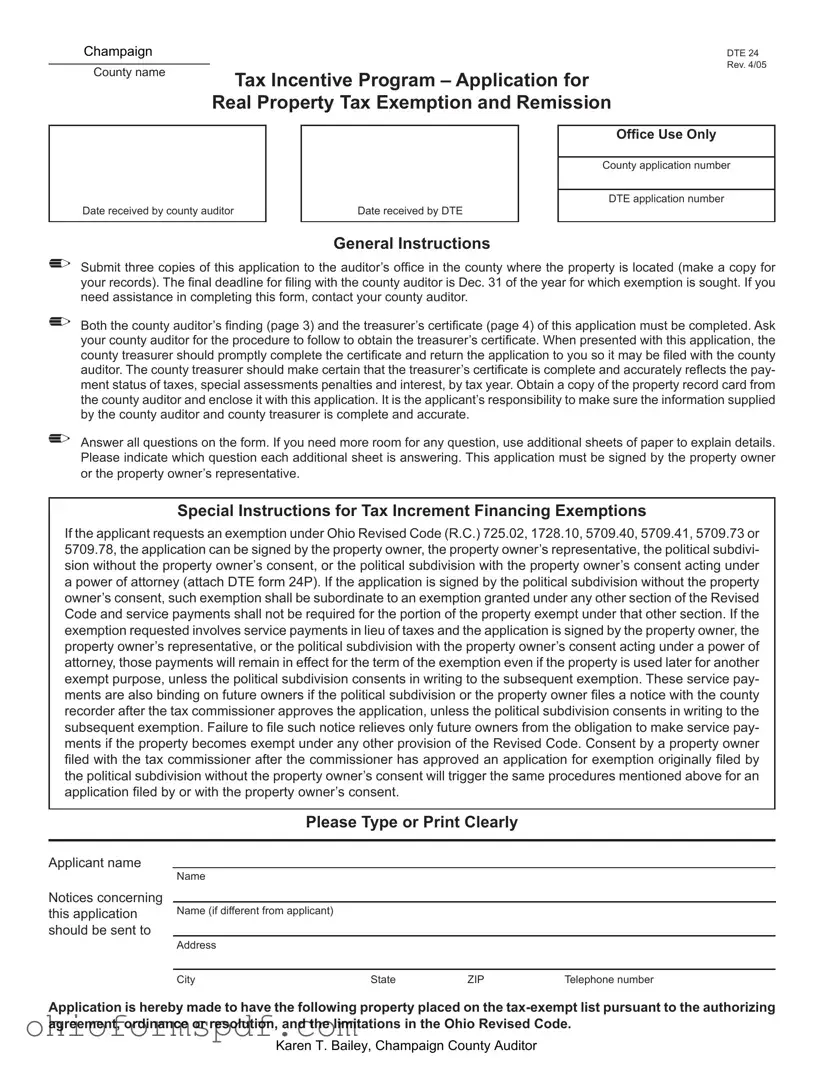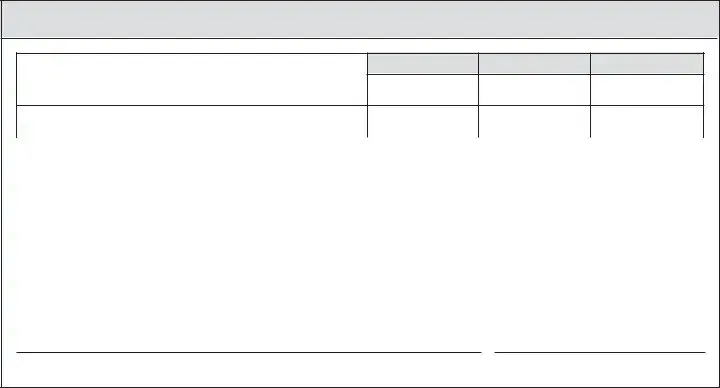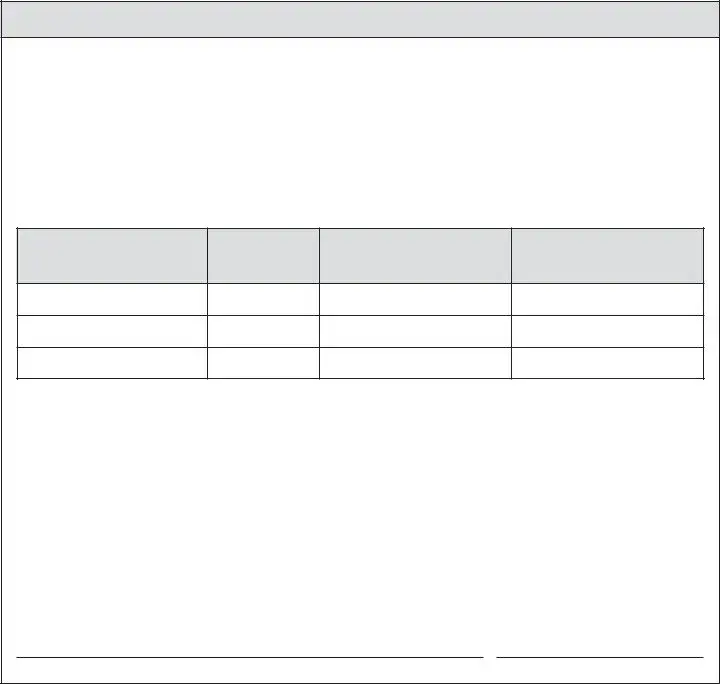What is the DTE 24 form in Ohio?
The DTE 24 form is an application used in Ohio for seeking real property tax exemption and remission under specific tax incentive programs. It requires information regarding the property, ownership, and the basis for exemption per the Ohio Revised Code (R.C.). The form must be filed with the county auditor in the county where the property is located.
Who needs to file the DTE 24 form?
Property owners or their representatives who are seeking a tax exemption for their real property under eligible tax incentive programs need to file the DTE 24 form. This includes those applying for Tax Increment Financing exemptions or other specified sections of the Ohio Revised Code related to property tax incentives.
When is the DTE 24 form due?
The deadline to file the DTE 24 form with the county auditor is December 31 of the year for which the exemption is sought. It's important to submit the application on time to qualify for the exemption for that tax year.
What documents must be attached to the DTE 24 form?
Along with the completed form, applicants must attach a copy of the property record card (which can be obtained from the county auditor), the resolution or ordinance from the subdivision granting the incentive, the applicant’s incentive agreement with the subdivision, and if required, the school district's approval. For Tax Increment Financing exemptions, a DTE form 24P may also need to be attached if the application is filed by the political subdivision with the owner’s consent.
How many copies of the DTE 24 form should be submitted?
Applicants are required to submit three copies of the DTE 24 form to the county auditor’s office. It's also recommended to keep a copy for personal records.
What happens if the form is not signed?
If the DTE 24 form is not signed by the property owner or the owner’s authorized representative, it will not be processed. A signature attests to the accuracy and completeness of the application under penalty of perjury.
What if more space is needed to answer questions on the form?
If additional space is needed to thoroughly answer any questions on the DTE 24 form, applicants can use additional sheets of paper. Be sure to indicate clearly which question each additional sheet references.
Can exemptions under the DTE 24 form affect future property owners?
Yes, exemptions, particularly those involving service payments in lieu of taxes as part of Tax Increment Financing, are binding on future owners. If a notice is filed with the county recorder by either the political subdivision or the property owner after the tax commissioner approves the application, future owners are also obligated to these terms unless a subsequent exemption is consented in writing.
What role does the county treasurer play in the application process?
The county treasurer must complete a certificate as part of the application, verifying that all taxes, special assessments, penalties, and interest levied and assessed against the property have been paid in full up to and including a specified tax year. Failure to obtain or properly fill this certificate will result in the application being dismissed.
Where should the DTE 24 form and accompanying documents be sent?
Two copies of the completed application, along with the required attachments, should be sent to the Ohio Department of Taxation, Tax Equalization Division, at the address provided in the form instructions. One copy is to be kept with the county auditor.




